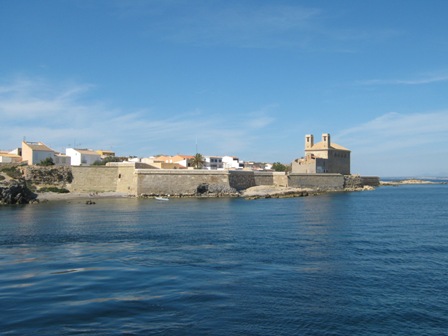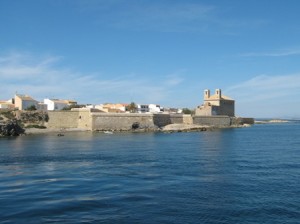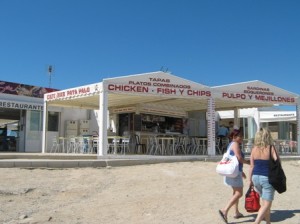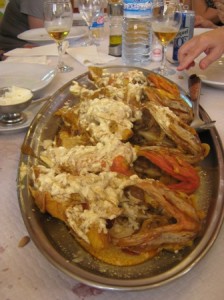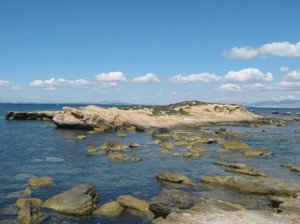With the new, free Valencia to Alicante via Alcoy motorway finished, it now takes less than two hours to drive down to Santa Pola, embarkation point for the short ferry ride to the island of Tabarca, one of the Valencian Community’s lesser-known jewels.
The island is somewhat tadpole shaped and is clearly separated into two parts by a causeway where the main sandy beach area has given rise to a series of restaurants, including one offering Fish Y Chips, and the port itself.
To the right is the old citadel with most of its defensive wall still intact, and to the left is the uninhabited part of the island, with only a watchtower, lighthouse, cemetery and flocks of overbearing seagulls.
The island, which is only 1,750 metres long and 300 wide at most, can be walked around in less than an hour, enough time to work up an appetite to eat the island speciality, Caldero, a dish consisting of red rice with red peppers and a damnably ugly but damned fine tasting fish called ‘gallina’ coated in garlic mayonnaise, even though it doesn’t actually resemble a hen at all. In fact if anything it resembles a large, angry scaly snarl that glares at you throughout the meal as you apologetically consume its flesh.
The local inhabitants on the other hand are exceptionally friendly and always willing to explain about the island’s the history, gastronomy or long winter nights to you, whether you ask them to or not.
We experienced our Caldero at the Don Jerónimo restaurant, just off the main square with the four wells but no fountain, the one with kaleidoscope rocks.
One interesting anecdote refers to the Duque de Maqueda, who in 1609 went rabbit hunting on the island. After setting sail, no doubt well-laden with rabbits and dreaming of paella, he realised he’d left a dog behind. Like the Rangers, for the Duke, nobody got left behind, and so he sent a boat crewed by 24 sailors to recover it. Unfortunately some pirates turned up at the same time and proceeded to cut all 24 throats, which really rather spoilt a good day’s hunting, what?
When the weather is good the island buzzes with activity during the day, but when the last ferry sails, Tabarca is at its languid best, abandoned to relaxation and working up the energy for a second seafood banquet in one of the handful of restaurants remaining open, sharing the island with its 25 permanent residents and the depleted tourists at one of the three small guesthouses.
At this point you are seriously outnumbered by seagulls and cats, and able to watch the sun setting over the sea.
The island takes its name from another island just off the coast of Tunisia, and was first settled with Genoa sailors from the original island who were rescued from captivity in 1768. This explains why most of the people in the cemetery seem to be called Russo.
Before 1700 it was called Illa de Sant Pau (‘Saint Paul’s Island’).
Frequently used as a base by Corsairs and Barbary pirates, it was fortified by the Spanish king (or, to be honest, by people he sent) Carlos III.
Locally caught fish include sea bass, grouper, conger eel and gilthead and the island used to have a colony of monk seals until the 1960s, when they probably became fed up with all the screeching of the seagulls and decided to bugger off somewhere else.

